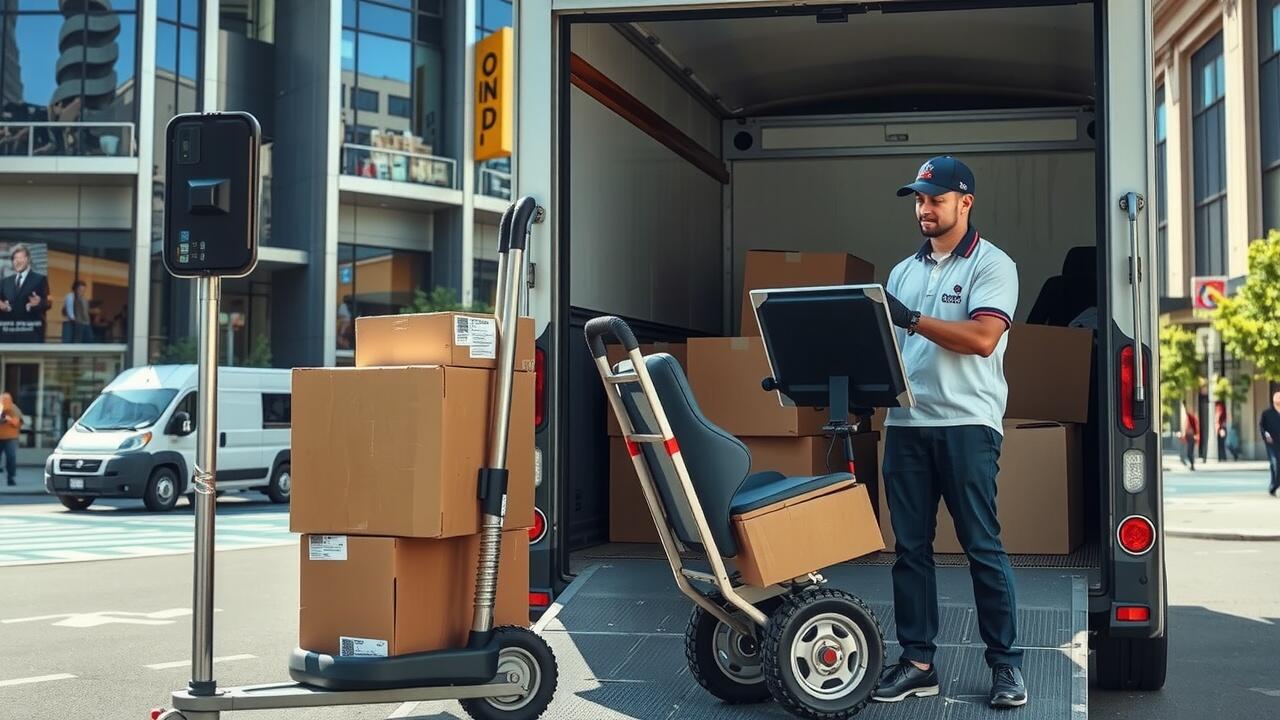
Table Of Contents
Communicating with Your Team
Effective communication is key during a commercial relocation. Keeping employees informed about the timeline, reasons for the move, and any changes in job roles or responsibilities ensures everyone is aligned and reduces uncertainty. Consider using multiple channels such as email updates, team meetings, and bulletin boards to share information. This approach encourages dialogue and allows employees to voice their concerns and ask questions.
When planning for a move, it's important to involve the team in discussions. Encourage feedback about the relocation process, especially in areas that affect their daily work. Sharing the vision for the new office can help create excitement and buy-in among staff members. Clear communication not only enhances morale but also smooths the logistics of commercial moving in California, United States.
Strategies for Keeping Employees Informed
Clear communication is vital during a commercial relocation. Keeping employees informed about the timeline and significant changes fosters a sense of involvement in the moving process. Regular updates through emails, meetings, or internal newsletters can help ensure everyone is on the same page. Utilizing communication platforms for real-time updates can also enhance engagement and reduce uncertainty.
Organizing informational sessions can further support a smooth transition. Employees should have the opportunity to ask questions and express concerns. Providing a central hub for resources related to the move, such as information about the new location and logistics, aids in addressing potential anxieties. By prioritizing this communication strategy, businesses can navigate the challenges of commercial moving in California, United States more effectively.
Setting Up Your New Space
Creating an efficient office layout is crucial for productivity and employee morale. Consider how teams collaborate when designing the new space. Open areas can foster communication, while designated quiet zones can aid focus. Ensure that essential services are easily accessible, reducing unnecessary travel within the office. Use modular furniture to allow flexibility, accommodating changes in team sizes or projects. Investing time in planning the layout will pay off in smoother operations.
When planning for commercial moving in California, United States, take into account the specifics of the new location. Pay attention to the local regulations and building codes that may influence your setup. Evaluate amenities like parking availability and public transport access for employees. Proper signage is vital for navigation around the office. Ensure that the technology infrastructure is installed and tested before the move. This preparation will minimize disruption, allowing for a seamless transition into the new environment.
Tips for Efficient Office Layouts
Designing an efficient office layout is crucial for productivity and employee satisfaction. To optimize your space, consider the flow of movement throughout the office. Arrange workstations, meeting rooms, and common areas in a way that promotes easy access while minimizing distractions. Zones for collaboration should be strategically placed to encourage teamwork without disrupting individual workspaces. Incorporating elements like ergonomic furniture can enhance comfort and support well-being, making the environment conducive to productivity.
During your commercial moving in California, United States, take advantage of the opportunity to reevaluate your office design. Analyze the current layout and identify areas for improvement. Consider using flexible furniture arrangements that can adapt to various activities, such as team meetings or quiet work sessions. Utilize technology solutions for organization and communication, ensuring that all employees can easily navigate the new setup. Prioritizing an efficient office layout can significantly impact overall morale and workflow as your team transitions to a new environment.
Minimizing Downtime
Minimizing downtime during a commercial move requires careful planning and execution. Start by developing a detailed timeline that includes essential tasks, such as packing, moving, and setting up the new office space. Coordinate with your team to ensure everyone understands their responsibilities and deadlines. Utilizing professional movers experienced in commercial moving in California, United States can significantly ease the burden on your staff while ensuring a swift and organized relocation process.
Consider implementing strategies that allow essential operations to continue throughout the move. For example, schedule the move during off-peak hours or over a weekend. This approach can help reduce the impact on daily activities and allow employees to be back to work in the new location sooner. Providing clear communication about timelines and expectations will keep your team engaged and ready to transition smoothly to their new environment.
Strategies for a Smooth Transition
A smooth transition during a commercial relocation requires meticulous planning and execution. Begin by establishing a timeline that outlines all necessary tasks, from packing to setting up equipment in the new location. Assign roles to team members to ensure accountability and streamline the process. Regular check-ins will help to monitor progress and address any concerns promptly. This structured approach aids in minimizing interruptions and keeps everyone focused on their responsibilities.
In addition to strong planning, effective communication is key throughout the transition. Keep employees informed about each phase of the move and encourage them to share their feedback. Utilizing tools like newsletters or intra-office communications can ensure that everyone remains on the same page. Addressing potential challenges related to commercial moving in California, United States, early on can prevent misunderstandings and enhance overall morale. This collaborative effort fosters a supportive atmosphere as the organization navigates the changes ahead.
FAQS
What are some effective ways to communicate with my team during a commercial relocation?
Effective communication can be achieved through regular updates via emails, team meetings, and dedicated project management tools. Ensuring that employees feel informed and included in the process helps reduce anxiety and promotes a smoother transition.
How can I keep my employees informed about the relocation timeline?
Create a detailed relocation timeline and share it with your team. Regularly update them on any changes and milestones reached, and encourage feedback or questions to ensure everyone is on the same page.
What should I consider when setting up the layout of my new office space?
Consider factors such as employee workflow, collaboration needs, and the overall vibe you want to create. Efficient office layouts should promote productivity while allowing for areas of collaboration and social interaction.
How can I minimize downtime during the relocation process?
To minimize downtime, plan the move during off-peak hours, ensure all equipment and services are set up before moving day, and consider phased moving strategies that allow parts of the business to operate while others are being relocated.
What are some strategies for a smooth transition to the new office?
To ensure a smooth transition, focus on thorough planning, assign clear roles and responsibilities, and provide employees with the necessary resources and support during the move. Additionally, consider hosting a welcome event in the new space to enhance team morale.
